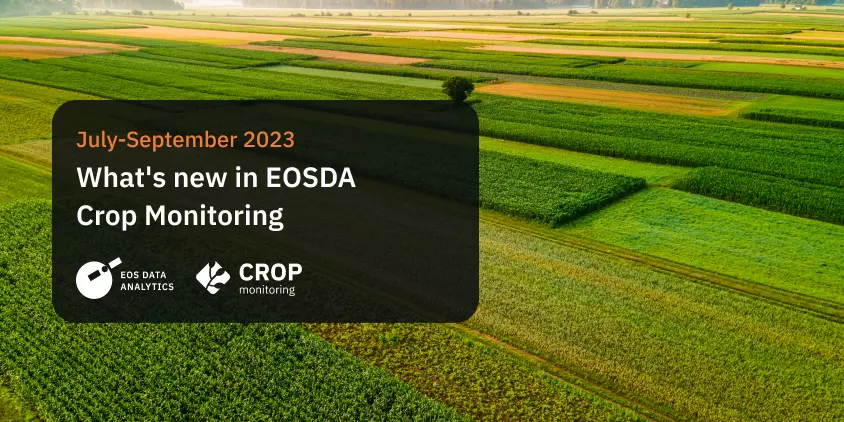
Multilayer, Disease Risk & More: New In EOSDA Crop Monitoring
The third quarter of 2023 has already concluded, and it’s time to share the hottest updates on what we’ve been working on. With EOSDA Crop Monitoring, we continue to push the boundaries of precision agriculture by presenting some next-generation innovations.
In this quarterly update, we’re excited to highlight the remarkable strides we’ve made in July-September, showcasing the latest sought-after features now available on our platform.
Multilayer Maps
To enhance analytical insights derived from remote sensing and other types of data, we’ve introduced Multilayer maps. A multilayer map consists of several layers combined together. In this context, “layers” refer to analytical data that includes vegetation indices, moisture indices, terrain elevation, and more coming in the future. Multilayer maps are created via EOSDA’s proprietary algorithm. The final output depends on the weight assigned to each layer by the user.
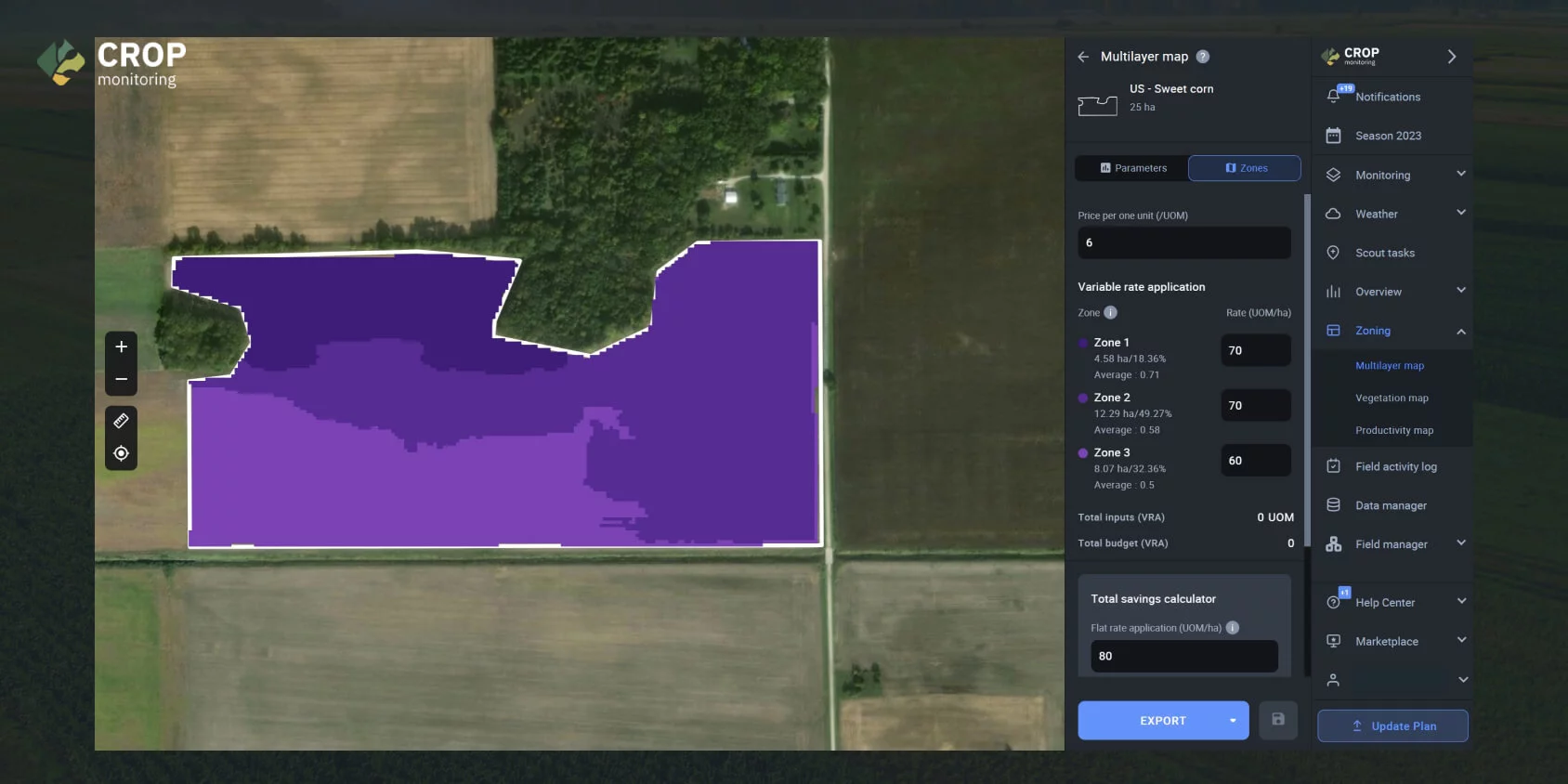
The majority of our Zoning users apply fertilizers based on multiple layers of analytical visualizations. When creating VRA maps, it is important to consider different data sources such as terrain elevation, humidity, and vegetation. Implementing multilayer maps was a logical step to enhance customer experience, allowing them to access all layers in one place without having to switch between different screens.
Stay tuned for more updates because we are continuously adding new layers to our Multilayer maps. Next steps include adding agricultural machinery files as layers, e.g., yield maps. This should improve the accuracy of the Multilayer maps. In the long-term perspective, we will add a layer of soil chemical analysis.
Disease Risk
To enhance predictability and resilience against non-pest-induced crop diseases, the Disease Risk feature offers a 14-day forecast that predicts the likelihood of specific diseases affecting crop fields. EOSDA Crop Monitoring empowers users to monitor daily disease risk and take immediate action, thereby reducing the probability of yield loss. This satellite crop monitoring approach is highly effective, as treating existing diseases is considerably more challenging.

Risk factors are calculated using an algorithm developed by EOSDA scientists. This algorithm considers the unique relationship between highly fluctuating variables including but not limited to temperature, humidity, and growth stage, which are specific to each disease and crop type.
The Disease Risk functionality is being iteratively enhanced, so stay tuned for new updates!
Crop Rotation
This feature provides users and their teams with a centralized hub for managing crop rotation. It streamlines the creation of new seasonal plans and facilitates the integration of new agronomists into the company. Furthermore, users will receive a graphical representation of the sowing structure for each season in the form of a diagram.
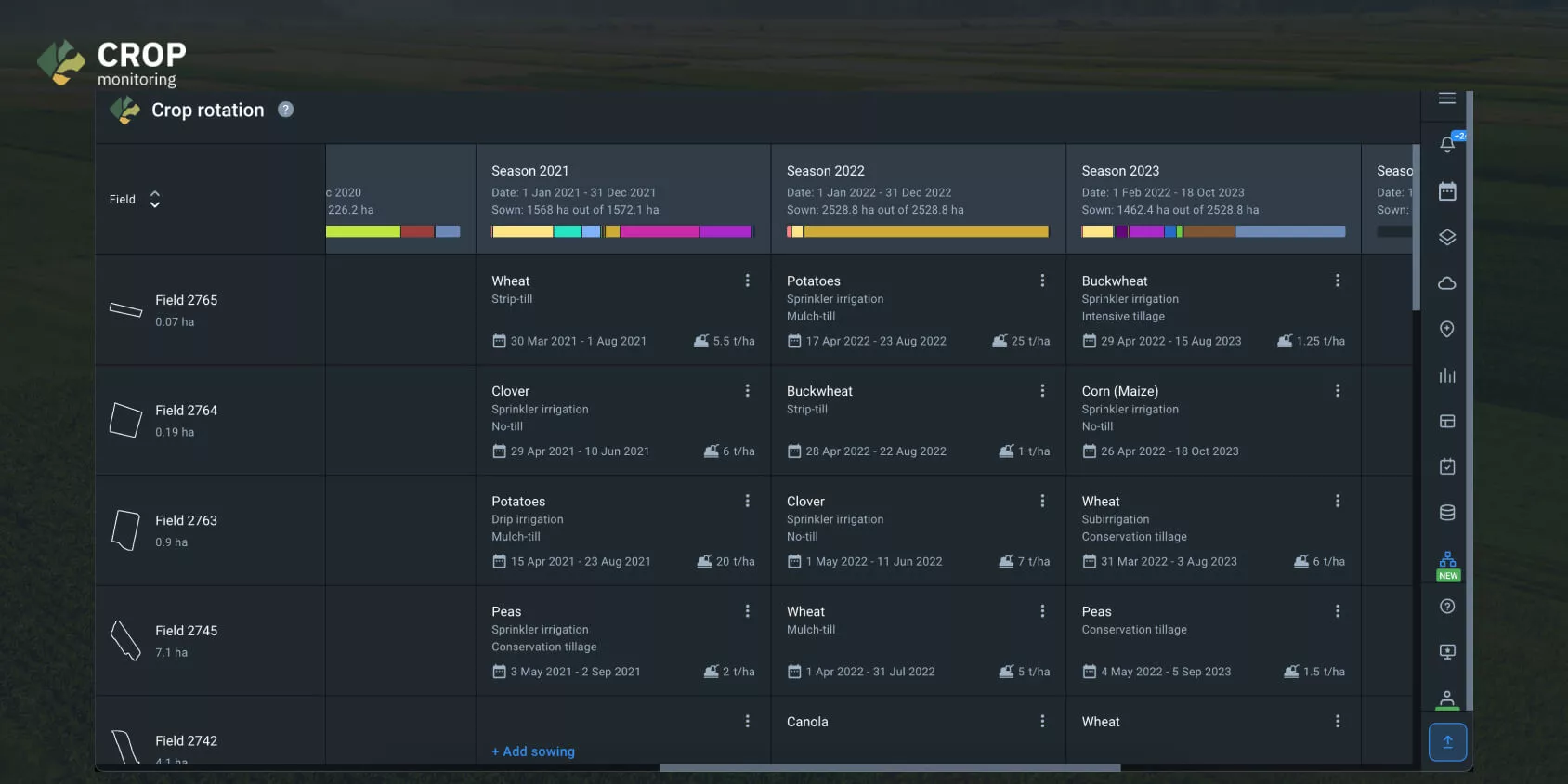
Performing fields analytics based on relevant satellite data to ensure effective decision-making!EOSDA Crop Monitoring
New Weather Parameters
To enhance the digital management of precision agriculture activities, we’ve introduced three new agri-specific weather parameters that will be valuable for growers:
- Evapotranspiration
- Global radiation
- Relative humidity
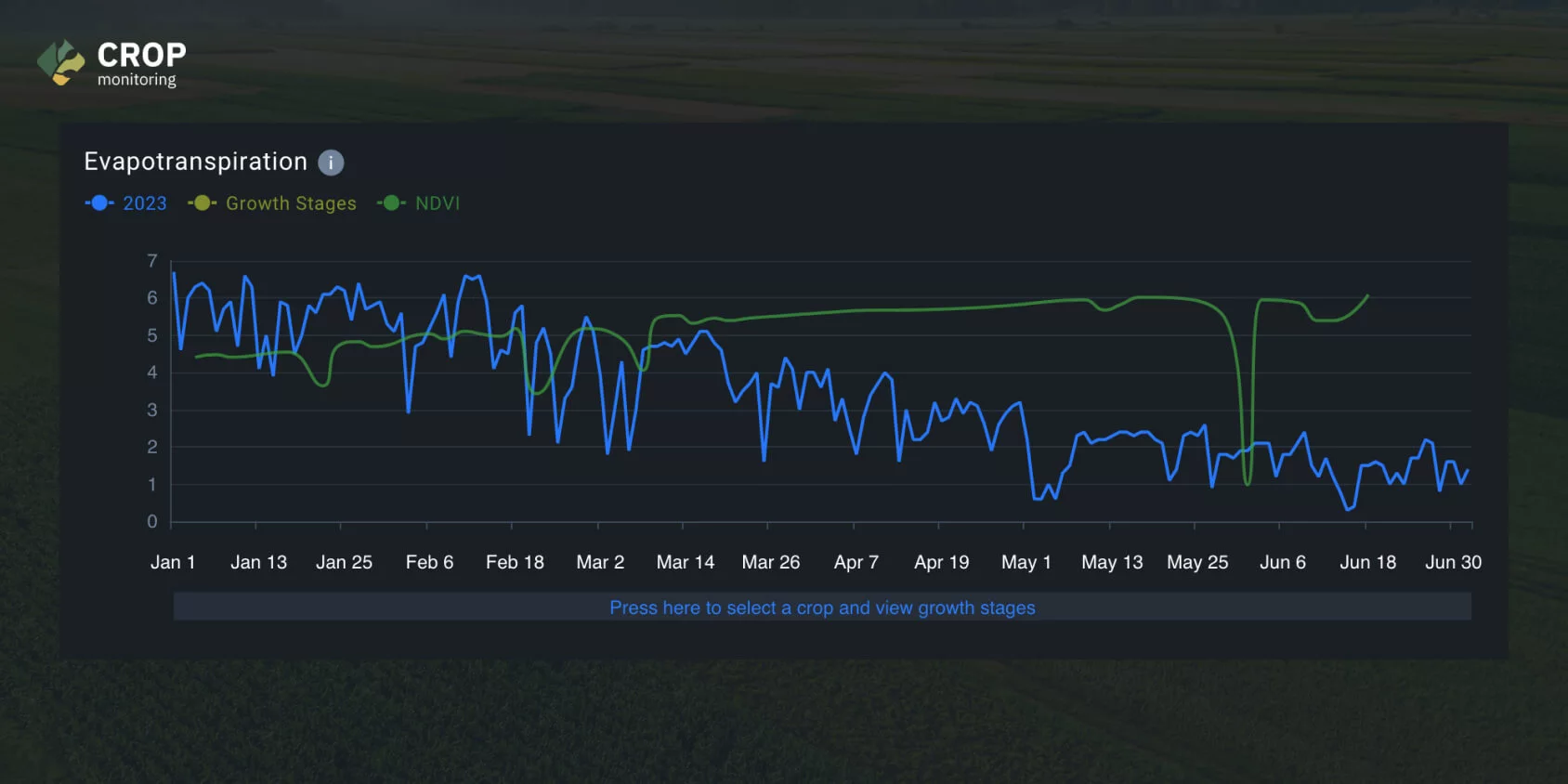
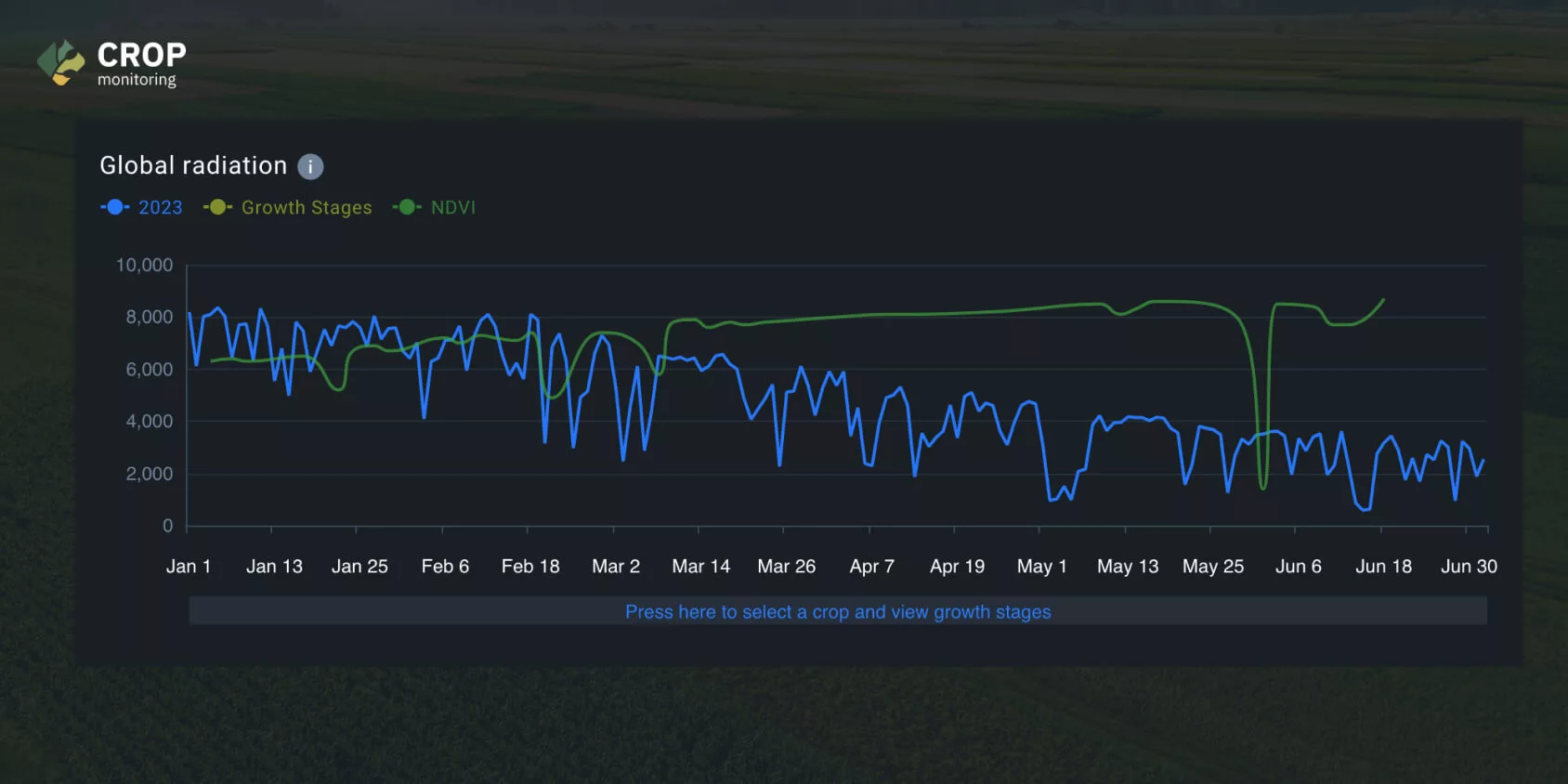
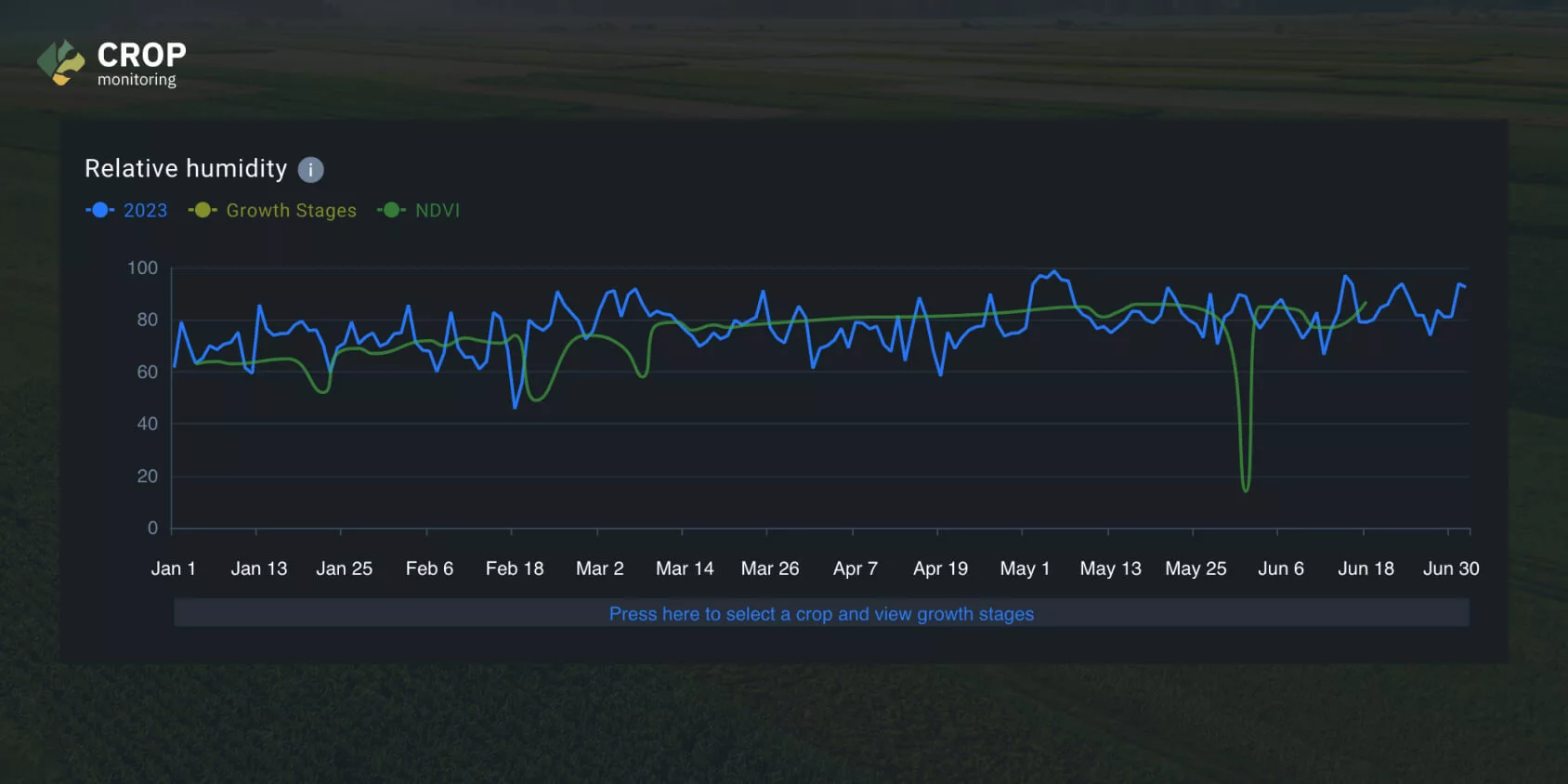
Continuous monitoring of these parameters is crucial for streamlining profitable and sustainable agricultural operations. Evapotranspiration helps manage irrigation by quantifying water loss from soil and crops. Global radiation indicates the availability of sunlight for photosynthesis. Relative humidity influences disease risk and crop growth, aiding in timely interventions and the optimization of agricultural practices.
Creating Activities From Weather Forecast Pages
Agricultural activity scheduling is highly dependent on local weather conditions. To perform effective sowing, nurturing, and harvesting, EOSDA Crop Monitoring now allows users to easily plan specific dates and times for fieldwork, using analytical insights directly from their Weather forecast page.
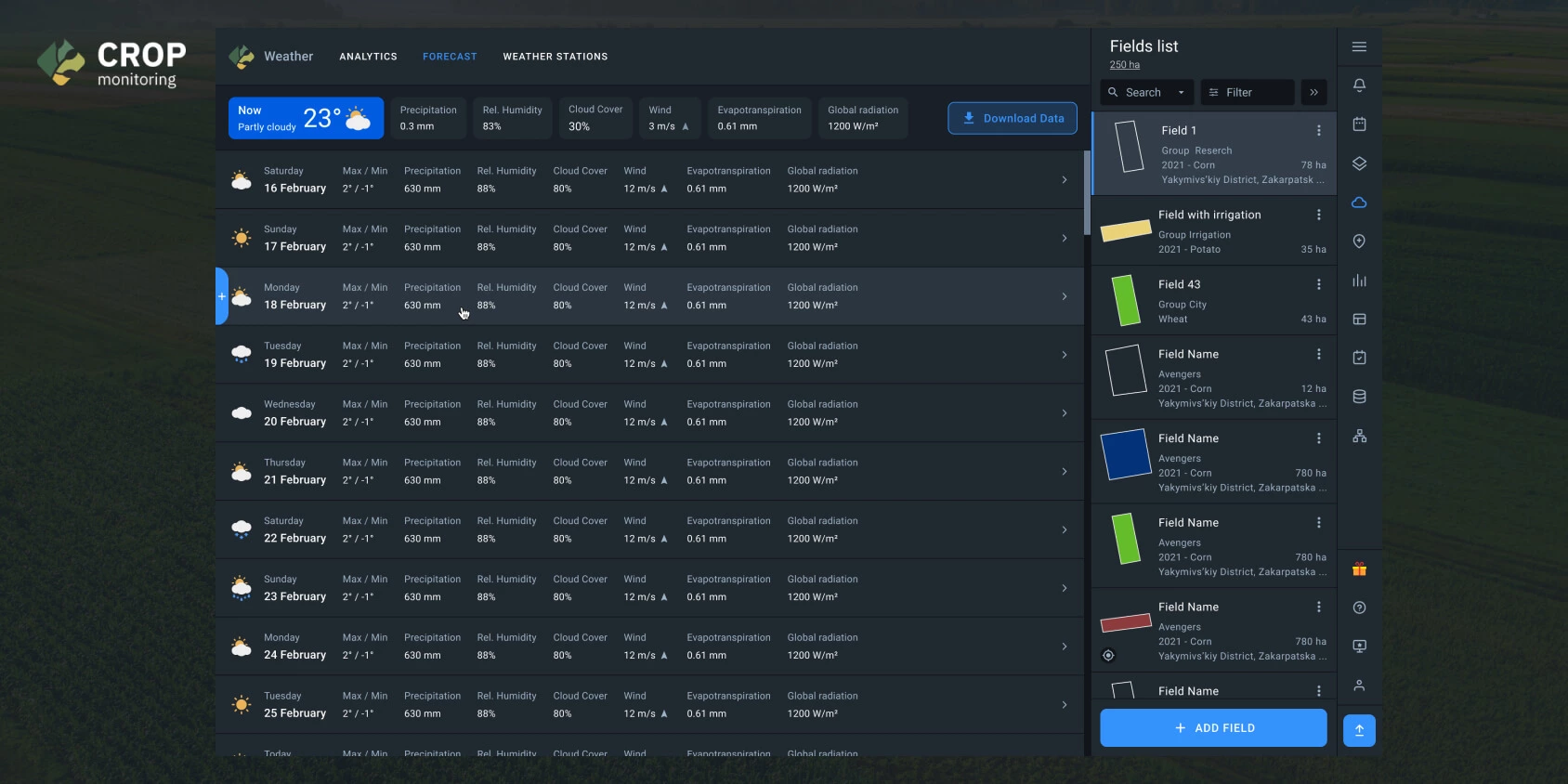
Merge Activity Log & Scouting
Activity Log and Scouting features have now been integrated into a seamless workflow, which makes it easier to apply findings from personal field visits to the planning of field activities.
You can now efficiently plan and monitor scout tasks with the Field Activity Log Calendar by viewing and editing all field activities in one place. Arrange a scout task either before a specific activity to confirm its need or after to assess its impact. Allocate time among scouts on a unified timeline and instantly identify completed, upcoming, or delayed tasks in the calendar, all color-coded for quick reference.
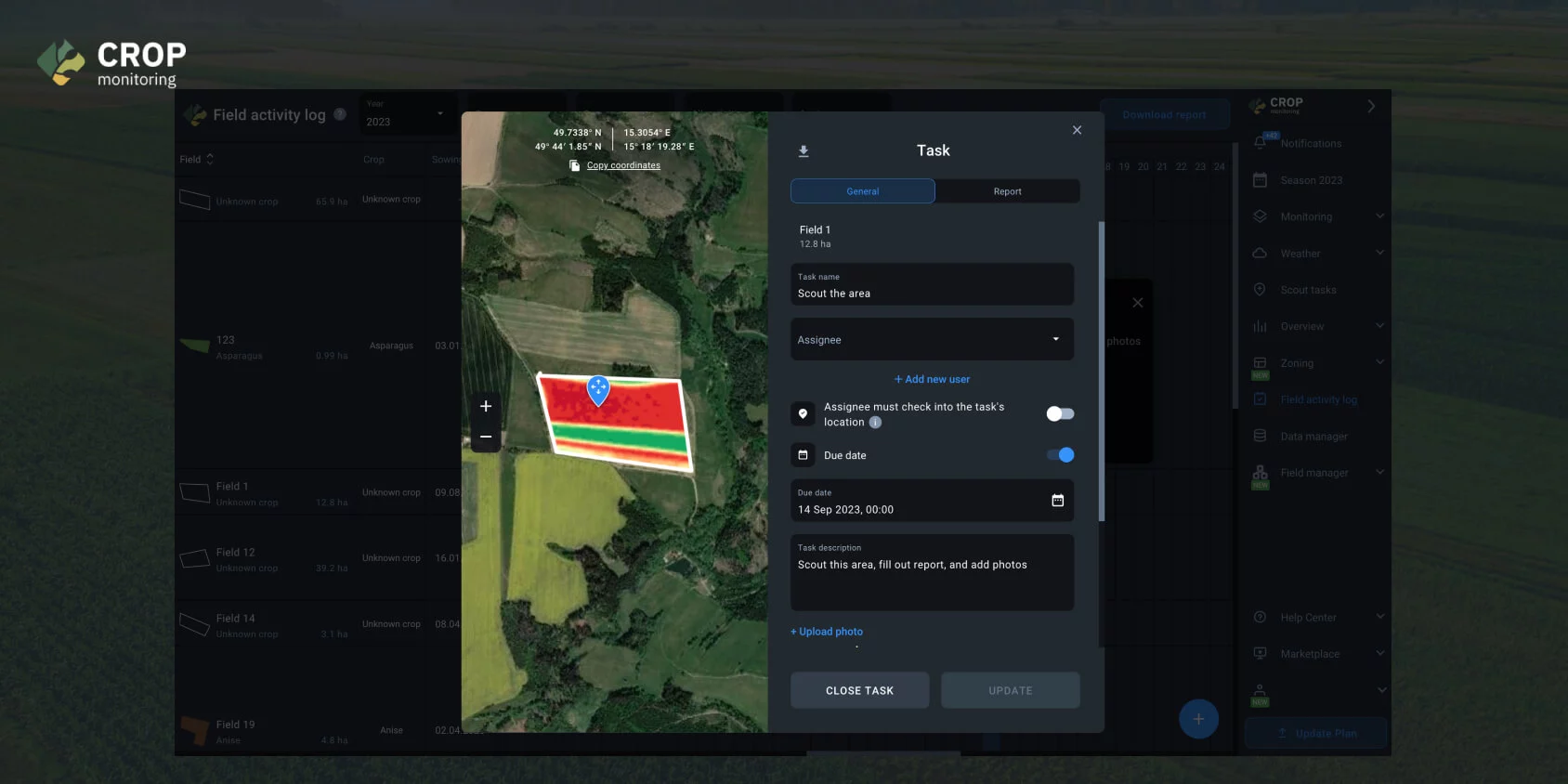
The global advancement of sustainable and business-optimized agriculture relies on its practitioners. We want to emphasize that your input and feedback are highly appreciated. If you have suggestions, questions, or comments about EOSDA Crop Monitoring, please don’t hesitate to reach out via our contact form. As our platform continues to expand and adapt to user needs, we value your experiences as they help drive us forward in making precision agriculture increasingly accessible.
About the author:
Karolina is currently pursuing a BSc at Pennsylvania State University. She excels in communicating the scientific value of EOSDA precision and sustainable solutions in an easy-to-read way. Karolina is a dedicated advocate for personal empowerment striving to represent and uplift Ukrainian women in the global STEM community. She’s a member of AWIS, WIT and other organizations.
Recent articles

Analyze 2025 & Plan Your Best Year Yet: LandViewer Christmas Offer
It’s the most wonderful time of the year! The Christmas holidays are here, and so is your chance to analyze 2025 and plan a prosperous 2026 with more affordable Pro plans in LandViewer.

EOSDA Models Climate Change Impact On Sugarcane Yields
EOSDA modeled future temperature, rainfall, and other climate impacts on Veracruz sugarcane. The results help growers plan long-term adaptation strategies, including timing, varieties, and irrigation.

EOSDA LandViewer Black Friday Sale: Exclusive Offers & Giveaway
This Black Friday, LandViewer offers new users the chance to save on monthly plans, get extra months with yearly subscriptions, and participate in a free annual plan giveaway.